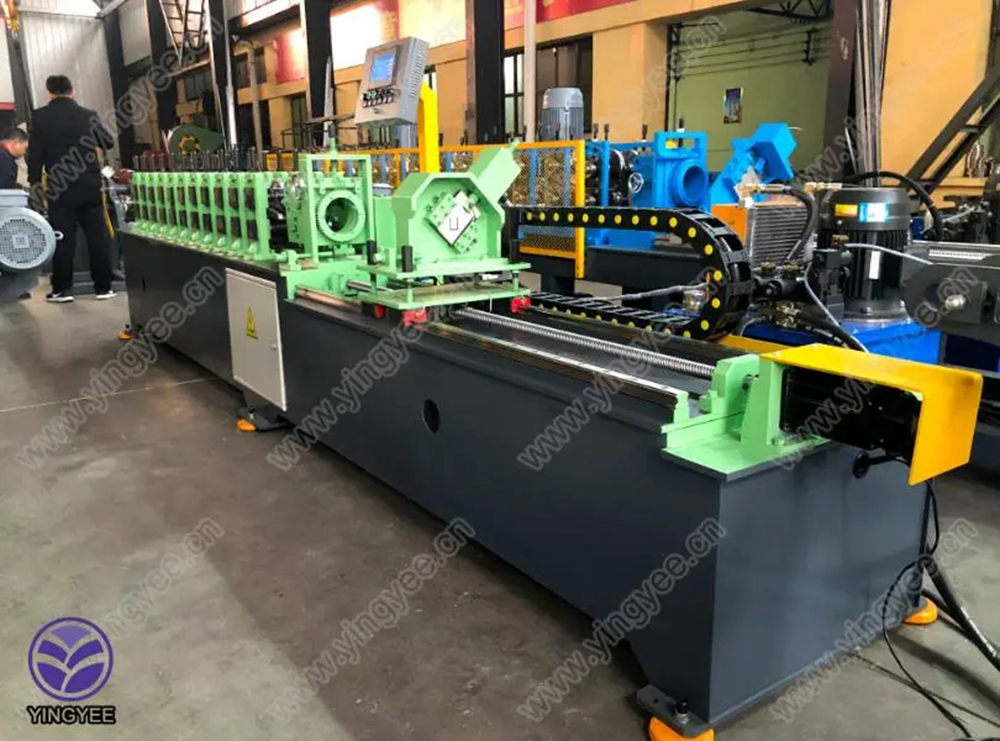
The Importance of Purlin Roll Forming Machines in Modern Construction
In the realm of modern construction, efficiency and precision are paramount. One of the critical components that facilitate these aspects is the purlin roll forming machine. These machines are designed to produce purlins, which are structural elements that support roofs and walls in various types of buildings. Understanding the role and advantages of purlin roll forming machines can shed light on their importance in construction projects.
What Are Purlins?
Purlins are horizontal structural members that provide support to the roof and walls of buildings. They serve as the framework for roofing systems, enabling the distribution of loads from the roof to the columns and walls. Typically made from steel or aluminum, purlins are vital for enhancing the strength and stability of a structure. Different profiles of purlins, such as C, Z, or U shapes, are used depending on the design requirements and load-bearing capabilities.
The Function of Purlin Roll Forming Machines
Purlin roll forming machines are specialized equipment that convert flat metal sheets into purlins through a continuous bending process. The process involves feeding raw material through a series of rollers that shape the metal into the desired profile. These machines can produce various types of purlins efficiently and accurately, enabling manufacturers to meet the diverse needs of construction projects.
1. Efficiency Purlin roll forming machines streamline the production process. Unlike traditional methods that may involve cutting and welding, roll forming allows for a continuous process that minimizes waste and reduces production time. This efficiency translates into cost savings for manufacturers and quicker delivery times for builders.
2. Precision Modern purlin roll forming machines are equipped with advanced technology that ensures precise dimensions and consistent quality. Automated systems can maintain tight tolerances, which is essential for structural integrity. This precision is particularly important when purlins are used in applications where load-bearing requirements are critical.

3. Versatility Purlin roll forming machines can create various shapes and sizes of purlins, making them suitable for different construction applications. Manufacturers can adjust the settings of the machines to produce custom profiles that meet specific project requirements. This flexibility allows for greater innovation in design and construction practices.
4. Material Efficiency The roll forming process is inherently material-efficient. Since it produces minimal waste and allows for the use of recycled materials, it aligns with the growing trend toward sustainable construction. Builders are increasingly looking for ways to minimize their environmental impact, and the use of purlin roll forming machines can contribute significantly to eco-friendly building practices.
Applications of Purlin Roll Forming Machines
The applications of purlin roll forming machines are vast. They are commonly used in constructing steel buildings, warehouses, factories, and agricultural structures. In addition, purlins are critical components in roof trusses, allowing for the efficient spanning of large areas without the need for excessive internal support columns. This capability is especially beneficial in modern architecture, where open spaces and large spans are desirable.
In recent years, the demand for pre-engineered buildings has surged, leading to an increased need for purlin roll forming machines. These buildings often require specific load-bearing configurations, and the ability to produce customized purlins on-demand is invaluable to construction companies.
Conclusion
Purlin roll forming machines play an essential role in the construction industry, providing advantages in efficiency, precision, versatility, and sustainability. As the industry continues to evolve, these machines will remain a crucial component in meeting the growing demands of modern construction. By enabling the production of high-quality purlins that meet various design and engineering requirements, they contribute to the overall strength and durability of buildings. As we move forward, investing in advanced roll forming technology will be paramount for manufacturers seeking to stay competitive in the ever-evolving world of construction.